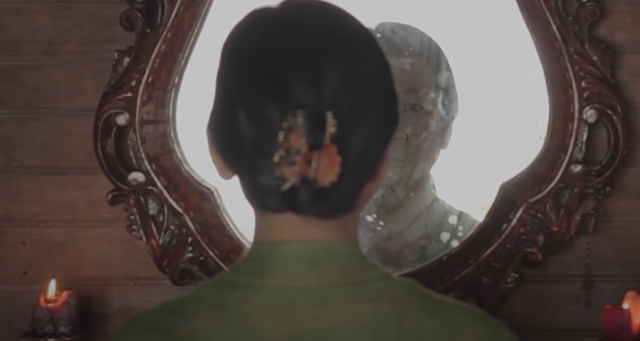Sanctissima is easily the best amongst the the other short films it screened alongside with, as part of Cinemalaya’s Shorts A block. This is not to say that the short is perfect. The film has many good points as it delivers its promise of very Filipino barrio-set horror. Its flaws though lie on missed opportunities stemming from tonal shifts and its abrupt editing.
Directed by Kenneth Dagatan, Sanctissima basically tells the story of a barrio abortionist, Marissa, who disposes the foetuses she aborts by feeding it to a demonspawn she keeps in her home.
Admitttedly taking it’s cues from movies like Rosemary’s Baby and, the Hong Kong horror film, Dumplings, the plot of Sanctissima is not a fairly original idea but one that works with its transposition of demonic horror to the barrio setting. The short film embraces its locality. There has always been an inherent mystery to the stereotype of lone manangs in the barrio. These are figures that children all around cower in fear to, usually being used by parents as threats. But what if these fears are not unfounded? It’s not a far off thought that lola from the old house down the block may be hiding some skeletons inside her closet…or in this case, demons under the bed. Sanctissima puts this real world paranoia to life.
The first half of the short film sets a creepy atmosphere through its use of silence. Minimal dialogue and ambient sounds are used as accents to set the tone of the movie. Strengthening this mood setting is the hitherto stoic performance of Ligaya Rabago in the role of Marissa (who btw, can also deliver a hell of an emotional outburst).
Off to a good start, issues start to arise as Sanctissima starts to employ abrupt cuts to its scenes. This works detrimental to the movie because instead of heightening tensions, building reveals, it becomes disruptive – losing what could have been better long-drawn scares.
Furthermore, given that the short is just 15 mins long, before the creepy atmosphere actually sets in, the tone shifts to more overt horror – using blood, guts, and gore. Morbid horror is not necessarily a bad thing, it’s just that it felt too rushed in. The best way to describe it is that its like Sanctissima hid behind a corner and, being excited, jumped too early to surprise its audience. Again, this may be understandable given the short runtime but nevertheless its feels like the movie didn’t fully earn its right yet to resort to this kind of horror without exhausting its atmosphere setting. (Phew, haba ng sentence.)
Amidst its flaws, Sanctissima is an enjoyable barrio horror from new breed filmmaker, Kenneth Dagatan. It’s strong enough to elicit the audience response you’d expect from a horror movie and, admittedly, I’m interested to see how its concept would work as a feature-length. Maybe with a longer running time, Sanctissima could play with its strengths better and give us a stronger, more frightening, childhood fear come to life.




One thought on “Sanctissima”
Comments are closed.